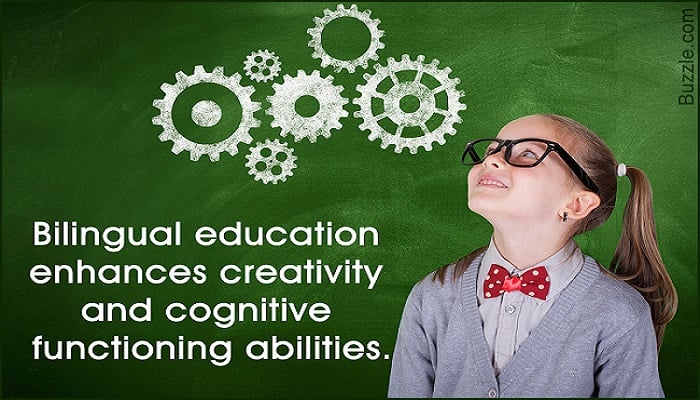Bilingual education is a teaching method that involves educating pupils in two languages, often their native language and a second language, in order to acquire competency in both languages and improve academic achievement. This approach acknowledges students' language and cultural variety and seeks to provide them with the tools necessary to navigate a multilingual environment. Bilingual education uses a variety of techniques and has proved several benefits for students, communities, and society as a whole. In this post, we will look at several methods to bilingual education and examine their substantial benefits.
Start Your Child's Journey to Academic Excellence Today!
Bilingual Educational Approaches:
- Dual Language Immersion: This method entails educating pupils in both languages, with an equal allocation of instructional time in each. For example, a class may spend half of the day learning in one language and the other half in another. Dual language immersion fosters high levels of bilingualism and biliteracy by exposing pupils to academic material and language abilities in two languages.
- Transitional Bilingual Education: This strategy is frequently utilized with students who are not native speakers of the dominant language. Students are initially taught academic topics in their original language, then progressively switch to the dominant language as they achieve fluency. The objective is to give a solid academic foundation in the original language while also facilitating a smooth transition to the second language.
- Two-Way or Dual Immersion Bilingual Education: This model brings together native speakers of both languages in the same classroom. The aim is for both groups to serve as language models for each other, fostering language and cultural exchange. This approach promotes bilingualism and multicultural understanding.
- Heritage Language Bilingual Education: Heritage language programs are designed to help students preserve and strengthen their native language abilities. This method is especially significant in protecting cultural identity and legacy in immigrant communities.
Bilingual Education Benefits:
- Cognitive Benefits: Bilingual education enhances cognitive abilities such as problem-solving, critical thinking, and multitasking. Switching between languages and understanding diverse linguistic structures can improve overall cognitive flexibility.
- Academic Achievement: Bilingual students often perform as well as, or even better than, their monolingual peers in academic subjects. They can transfer language skills and cognitive strategies learned in one language to another, leading to improved overall academic performance.
- Cultural Awareness and Sensitivity: Bilingual education exposes students to different cultures, fostering a greater appreciation for diversity and promoting cross-cultural understanding. This can contribute to reduced stereotypes and prejudice.
- Enhanced Career Opportunities: In an increasingly globalized world, those who speak many languages have a competitive advantage in the labor market. Many international corporations favor individuals who can connect with clients and partners from a variety of language backgrounds.
- Personal and Identity Development: Bilingualism can positively impact students' sense of identity, helping them connect with their cultural heritage and family traditions. It also provides them with a wider perspective on the world.
- Improved Language Skills: Bilingual education develops excellent language skills in both languages, including superior vocabulary, reading comprehension, and writing abilities. This linguistic skill may be applied to comprehending more complicated verbal structures in general.
- Positive Effects on Standardized Tests: Bilingual students often perform well on standardized tests that assess linguistic and cognitive abilities due to their enhanced language and analytical skills.
- Bicultural Competence: Bilingual students develop an understanding of cultural nuances and social norms associated with each language. This bicultural competence allows them to navigate effectively in different cultural contexts.
Problems and Decisions:
Despite the various advantages, establishing multilingual education may be difficult. Schools must offer skilled multilingual teachers, suitable instructional resources, and an environment favorable to language acquisition. Furthermore, some communities or officials may oppose bilingual education because they see it as a threat to the dominant language's supremacy.
It is critical to create well-structured bilingual programs that take into account elements such as the languages taught, the students' competency levels, and their cultural backgrounds. To guarantee that children are making academic and language development, bilingual education must be evaluated and adjusted on a constant basis.
Book 2-Week Free Trial Classes Now!
In conclusion, Bilingual education is an effective technique that recognizes and capitalizes on students' language and cultural diversity. The numerous techniques, such as dual language immersion, transitional bilingual education, two-way immersion, and heritage language programs, provide kids with unique possibilities to become fluent in several languages while also benefiting cognitive, intellectual, and cultural development. As civilizations continue to connect on a global scale, the benefits of bilingual education become clearer, allowing bilingual persons to succeed in a variety of personal, intellectual, and professional settings.

 Students/Staff
Students/Staff Parents
Parents ElevatEd
ElevatEd




-Nov-18-2025-03-57-47-3267-AM.png?width=360&length=360&name=401x226%20(6)-Nov-18-2025-03-57-47-3267-AM.png)



-Jul-22-2025-03-16-52-8797-AM.png?width=360&length=360&name=401x226%20(6)-Jul-22-2025-03-16-52-8797-AM.png)






